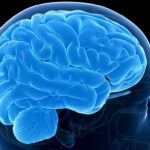Taiwanese researchers have found associations between abnormal levels of emotional distress and migraine headaches.
According to a study, published in the journal Headache, via a similar pathophysiological mechanism, symptoms of anxiety and depression may work in conjunction with migraine headaches.
The study, led by Hsuan-Te Chu, M.D., and his team of researchers, had a total of 588 participants. Attack frequencies, the presence of auras, sleep behavioral patterns, in addition to demographics, were all taken into consideration during the study.
“Multivariable linear regressions were employed to examine whether migraine frequency (1-4 headache days per month, 5-8 headache days per month, 9-14 headache days per month, or >14 headache days per month) was associated with depression/anxiety symptoms, as indicated by the Beck’s Depression Inventory (BDI) and Hospital Anxiety and Depression Subscales (HADS),” the study reads.
The highest BDI scores examined were correlated with chronic migraines, based on the findings. Researchers also uncovered indistinguishable results from the HADS scores. Additionally, the study also found that sleep disturbances were another indicator predicting more chronic anxiety and depressive symptoms.
“Higher migraine frequency, either with or without auras, correlated with higher symptom scores of anxiety and depression,” researchers concluded.
The association between anxiety and migraines have long been included in neurological and psychiatric discussions. Earlier this year, the US health website Migraine.com spoke with Dr. Brooke Pellegrino of the Hartford Healthcare Headache Center to get a better understanding.
“About 25% of people with migraine suffer from depression and about 50% suffer from anxiety. Anxiety disorders are two to five times more common in migraineurs than in the general population,” Dr. Pellegrino proclaimed.
“And often, patients suffer from both depression and anxiety.”
In the US, it is estimated that 13 percent of adults, or 37 million, suffer from migraines, in which women are affected the most, based on recent statistics.
